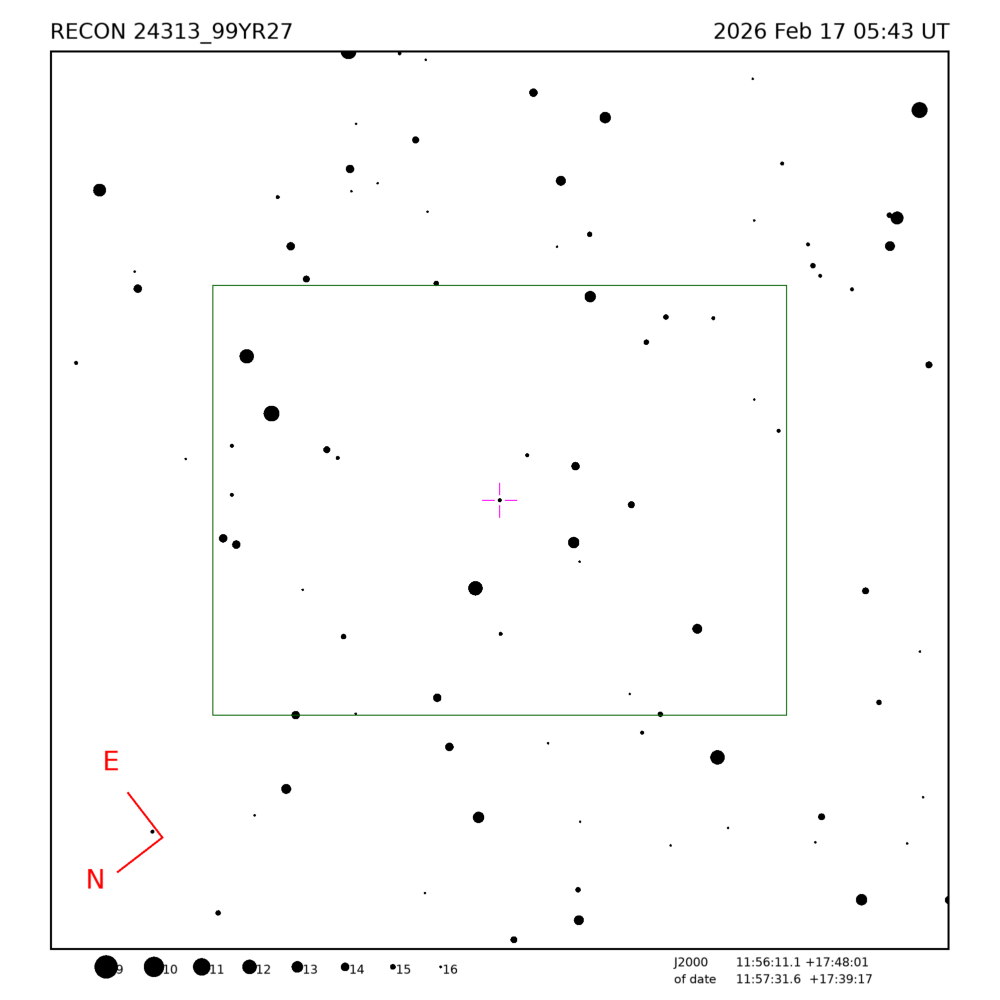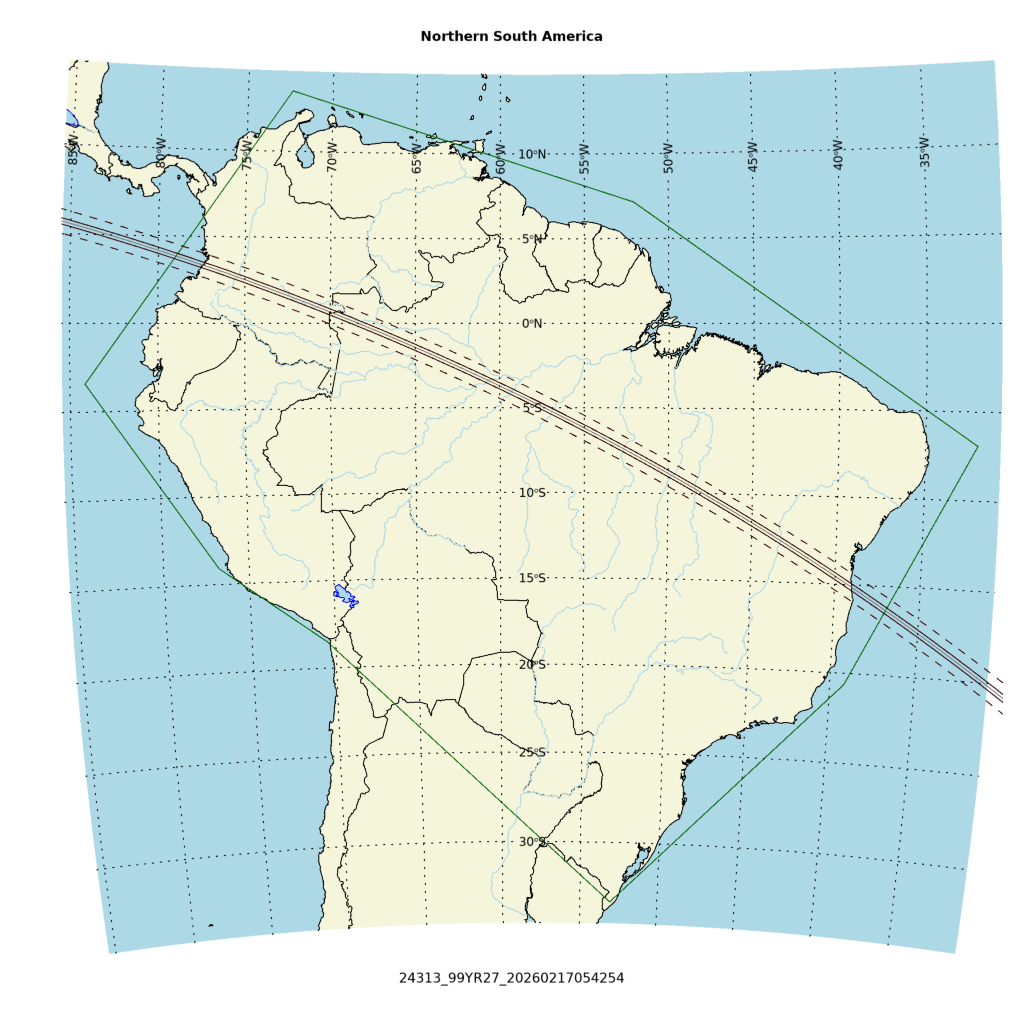
Occultation event with (24313) 99YR27, event index number 3257
Regions able to see the event: SAmericaN
Geocentric closest approach at 2026/02/17 05:42:54 UTC
J2000 position of star is 11:56:11.1 +17:48:01
Equinox of date position of star is 11:57:31.6 +17:39:17
Star is 150 degrees from the moon. Moon is 0% illuminated.
Stellar brightness G=15.9, apparent brightess of occulting body is G=16.1
Use an exposure time of 0.55 seconds with the standard RECON-QHY system.
SNR of 3.4 per integration for unocculted signal
Expected flux drop is 54% with SNR of 1.8 for the occulted depth (per occulted point)
Apparent velocity is 15.7 km/sec on the sky relative to the star, or, 16.6 arcsec/hr.
Position angle of asteroid motion is 116.2 degrees
The recommended exposure time corresponds to 8.6 km per image.
The 1-sigma error in the time of the event is 2.2 seconds.
The 1-sigma cross-track error in the shadow position is 16.8 km.
The sky-plane scale is 3385.4 km/arcsec.
Diameter estimates:
41.9 km assuming a 5% albedo, maximum of 2.7 sec for a central chord
17.1 km assuming a 30% albedo, maximum of 1.1 sec for a central chord
Cross-track diameter of 34.6 km used for deployment plan.
Star training set for 24313_99YR27, (2026/02/17 05:43UT) Object RA Dec mag sep mel Regulus 10:09:45.7 +11:50:19 1.3 26.67 175 Denebola 11:50:23.5 +14:25:33 2.1 3.66 152 95 Leo 11:57:01.1 +15:30:05 5.5 2.16 150 PPM 128681 11:59:02.7 +17:19:20 7.1 0.49 150 PPM 128679 11:58:55.7 +17:33:42 9.6 0.35 150 24313_99YR27 11:57:31.6 +17:39:17 16.1 150 Positions are for equinox of date


Star training set for 24313_99YR27, (2026/02/17 05:43UT) Object RA Dec mag sep mel Regulus 10:08:21.9 +11:58:02 1.3 26.67 175 Denebola 11:49:02.7 +14:34:16 2.1 3.66 152 95 Leo 11:55:40.6 +15:38:48 5.5 2.16 150 PPM 128681 11:57:42.2 +17:28:04 7.1 0.49 150 PPM 128679 11:57:35.3 +17:42:26 9.6 0.35 150 24313_99YR27 11:56:11.1 +17:48:01 16.1 150 Positions are for J2000